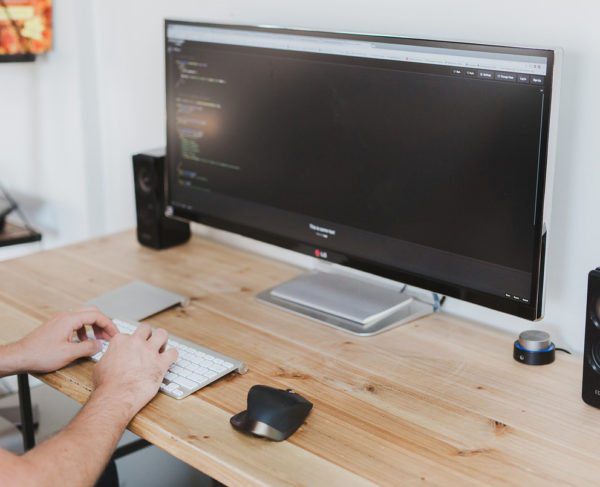With recent advanced in CPU and RAM tech, a lot of users are getting new computers. To complete the “upgrade”, most people shop for a new monitor as well. With the number of options available, it’s easy to get overwhelmed. Our guide, “5 Things to Consider When Buying a New Monitor” may help shed some light on some of the differences.
Computer monitors are often the most overlooked peripheral that is connected to your computer. With the amount of time the average user spends looking at a computer monitor, a poor decision can make work less efficient and could potentially be harmful to your eyesight and neck. With most of your work entirely based on the connection between your eyes and your monitor, a good monitor often makes sense. It’s well worth the investment to make sure you have a monitor that’s going to be large enough to easily read and comfortable to look at.
Here are a few things to consider when making a monitor purchase:
Size
A lot has changed since the days of the bulky 15″ CRT monitors. In the workplace these days, it’s not uncommon to see monitors 27 inches and even larger! Bigger monitors give you more usable space to work without minimizing or close windows, making your work more efficient. You’ll need to make sure you have adequate desk space to accommodate a larger monitor. There are even Ultra-Wide monitors that mimic a dual-monitor setup on one monitor. The most common sizes in the workplace are 22 to 24-inch monitors.
Resolution
Resolution is the number of pixels that a monitor has to display an image. Typically, monitor resolutions consist of 2 numbers. The most common resolution available is 1920 x 1080. This represents 1920 pixels horizontally by 1080 pixels vertically. Higher resolutions allow you to display more information on the monitor, and higher resolutions are sharper. It’s worth mentioning that the higher the resolution of the monitor, the smaller everything on the screen gets. However, Windows does a decent job in scaling those elements with some adjustments.
Video Inputs
Common video inputs include VGA, HDMI, DVI, and Displayport. Generally, it’s a good idea to match whatever connector you have on your computer, although adapters and cables are available for pretty much any input to any other inputs. SandStorm IT usually stocks a wide variety of adapters for our customers’ convenience. Please keep in mind that all connectors aren’t capable of the same performance.
Generally, DisplayPort is best, as it supports 3840 x 2160 (4K) at 60 frames per second. HDMI is a good choice as well, with the availability of cables and having the ability to also carry audio signals. DVI typically can only do 1920×1200, although DVI-D is capable of higher resolutions. The old school VGA should be used as a last resort, as it’s an analog signal. VGA connections typically won’t have the clarity of the other connections.
Budget
Much like other computer components and accessories, you get what you pay for when purchasing a monitor. A basic 1920 x 1080 24-inch motor without many features is available around the $150 range. On the other end of the spectrum, a premium 32-inch or larger monitor with 4K resolution with adjustable height can easily cost $500+. Typically, larger screens and higher resolutions drive up the price of a display. Typically, the resolution has the greatest impact on price, other than screen size. There’s quite a price difference between a 27-inch 1080p monitor (Less than $200) and a 27-inch 4K monitor (Around $350).
Features
Here are some of the features currently available on monitors:
- Touchscreen interface
- Curved Displays
- Adjustable Height
- USB Hub Built-In
- Built-in Speakers
- Picture In Picture
- SD Card Slot
- Higher refresh rates (144hz typically) for gaming
- Hardware Vertical Sync (FreeSync and G-Sync)
Obviously, more features equal a higher price. Some features, such as Hardware Vertical Sync and Higher refresh rates, are exclusively niche options (for gaming in this case).
If you need more space, but aren’t wanting a huge monitor, there’s always the option to go with a dual display setup, assuming your computer will support the displays. Most computers support a multi-display setup (at least 2 displays) out of the box. This is a great way to double the amount of usable space you have. It’s generally cheaper to have 2 slightly smaller displays instead of 1 large high quality display.
The right monitor can make your work easier by providing more visual space for you to work and also reduce eye fatigue. If you need assistance picking out the perfect monitor for your needs, please contact SandStorm IT at 901-475-0275.

